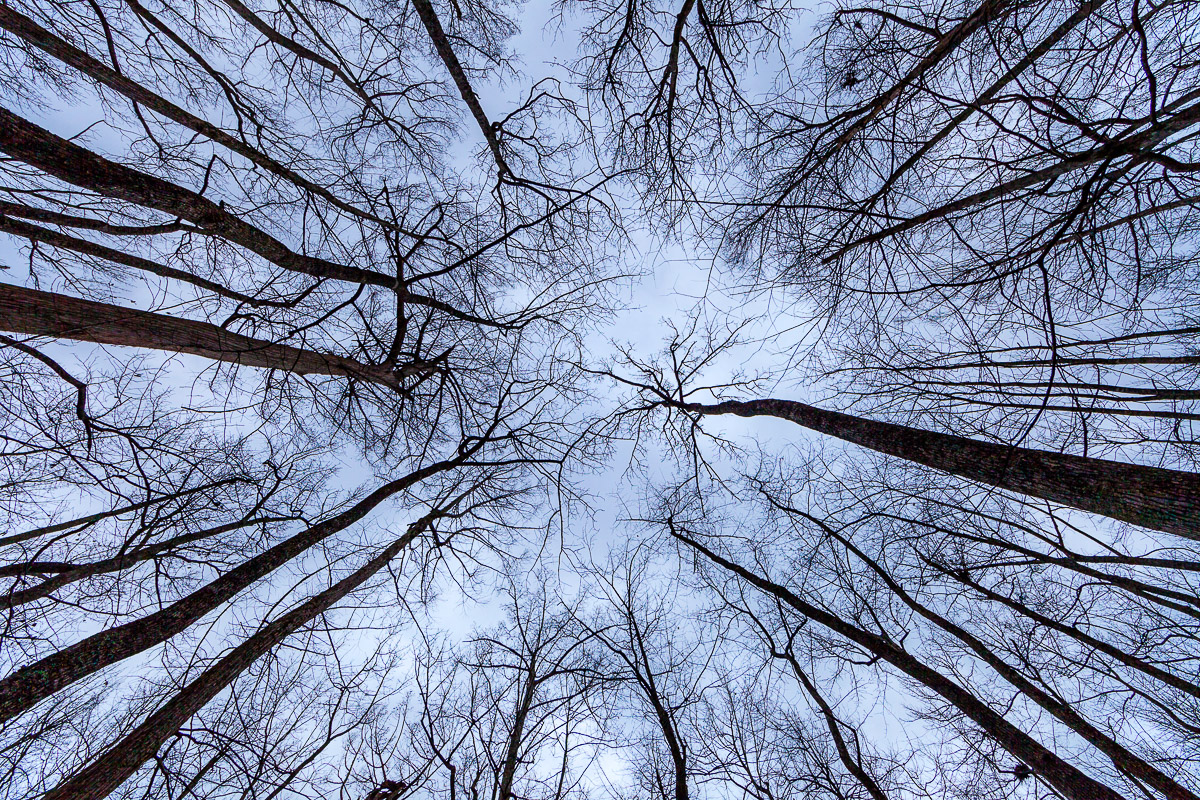I have a bad habit when I’m out taking pictures. I forget the world is 360 degrees. I am always looking in front of me. On occasion, I will look to my right and left. Even more infrequently, I look behind me or look down. But, I rarely remember to look up.
I took this picture in the Lorance Creek Natural Area, which is approximately 30 minutes from downtown Little Rock. Lorance Creek Natural Area is primarily a shallow, groundwater-fed swamp that spreads out along both sides of its namesake creek. An easy walk down a paved trail leads to a boardwalk that extends into the swamp area. I’ve only been to Lorance Creek a couple of times, and I don’t know how many people actually visit. But, I have always found it to be a very quiet and very peaceful location.
I photographed this scene on a stereotypical winter day: cold temperatures, thick clouds blanketing the sky, no leaves on the trees. I had walked to the end of the boardwalk looking for something that caught my attention. Nothing really did, so I began making my way back to the parking lot and my truck to go home. I stopped a couple of times and grabbed a few quick snapshots, but I knew as soon as I pressed the shutter button they would be deleted as soon as I got home.
I was starting to feel a bit sorry for myself over not having any pictures to show for my time and considering the trip a wasted effort when I happened to look directly above me and noticed the graphic lines created by the branches of the surrounding trees. I was immediately captivated by the abstract nature of the scene.
Normally, I try to avoid including an overcast sky in a photograph. In many instances, the sky will almost always be brighter than the subject, which will trick the exposure meter to underexpose the image. But, when you compensate for the underexposure, the sky becomes too bright, and a bright, featureless sky is very visually distracting. In this case, though, I thought that could work in my favor. After all, the subject wasn’t necessarily the trees themselves, but rather the patterns and shapes of their branches against the sky.
I attached my 14mm lens to the camera and looked through the viewfinder. The super-wide angle lens elongated the perspective and made the trees seem taller. It also produced a keystoning effect so the trees appeared to be lean inward toward the center of the photograph. The elongated perspective combined with the keystoning effect created what I thought was a very pleasing composition. Another benefit of using this lens was it allowed me to use a wider aperture and faster shutter speed while maintaining complete depth of field. This was especially important because I was handholding the camera, and the faster shutter speed would mitigate any camera shake.
Opening the file on my computer, I decided to process the image as if it were a black and white photograph, which, in essence, it was. I decreased the brightness of the sky, which helped enhance what little texture the clouds had in them. I then opened the shadow areas of the three slightly to bring out some of the detail in the trunks.
I learned an important lesson that dreary winter day: don’t look in just one or two direction; look in all directions. Photographic subjects are literally all around you around because it’s a 360 degree world.
